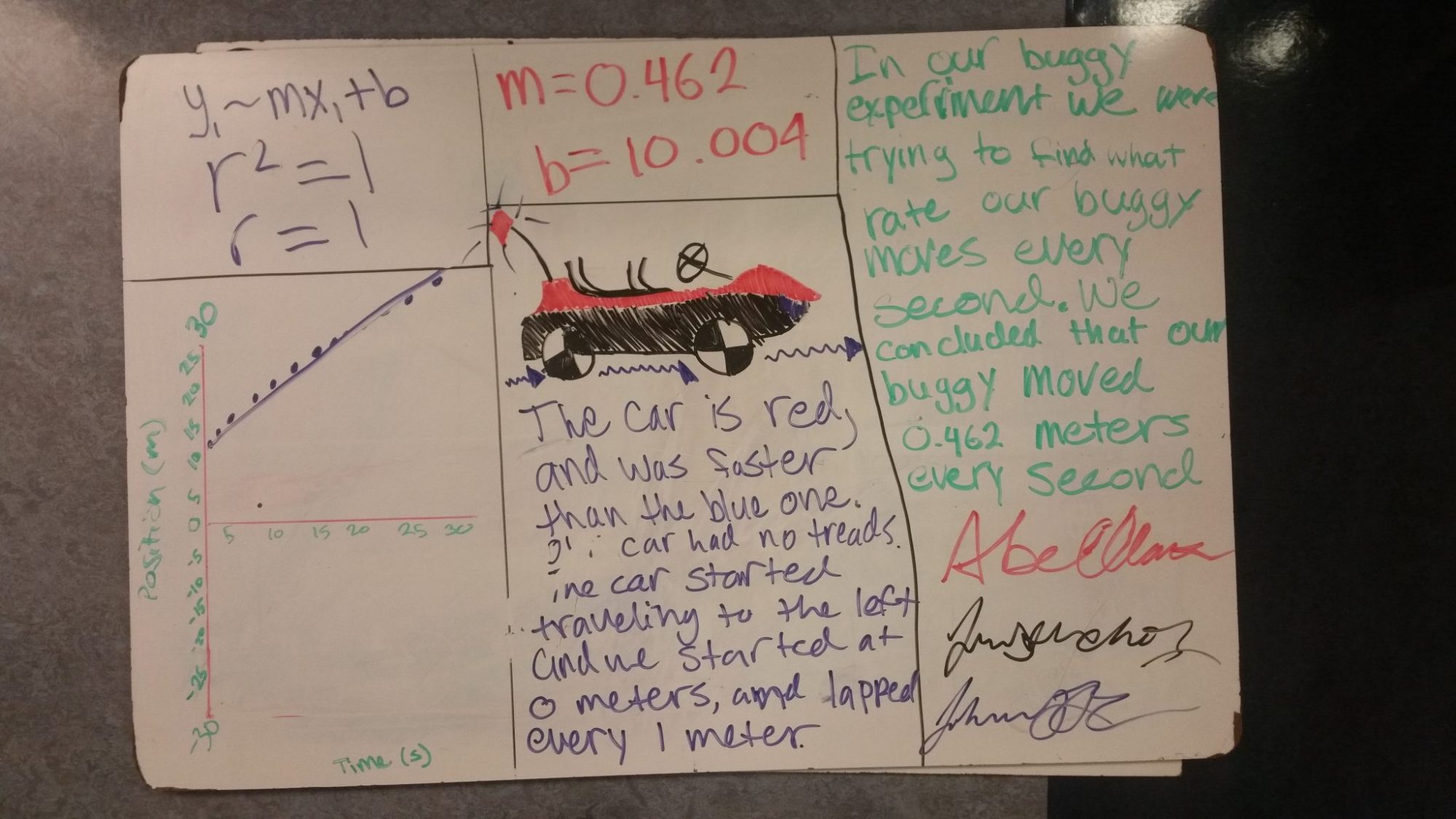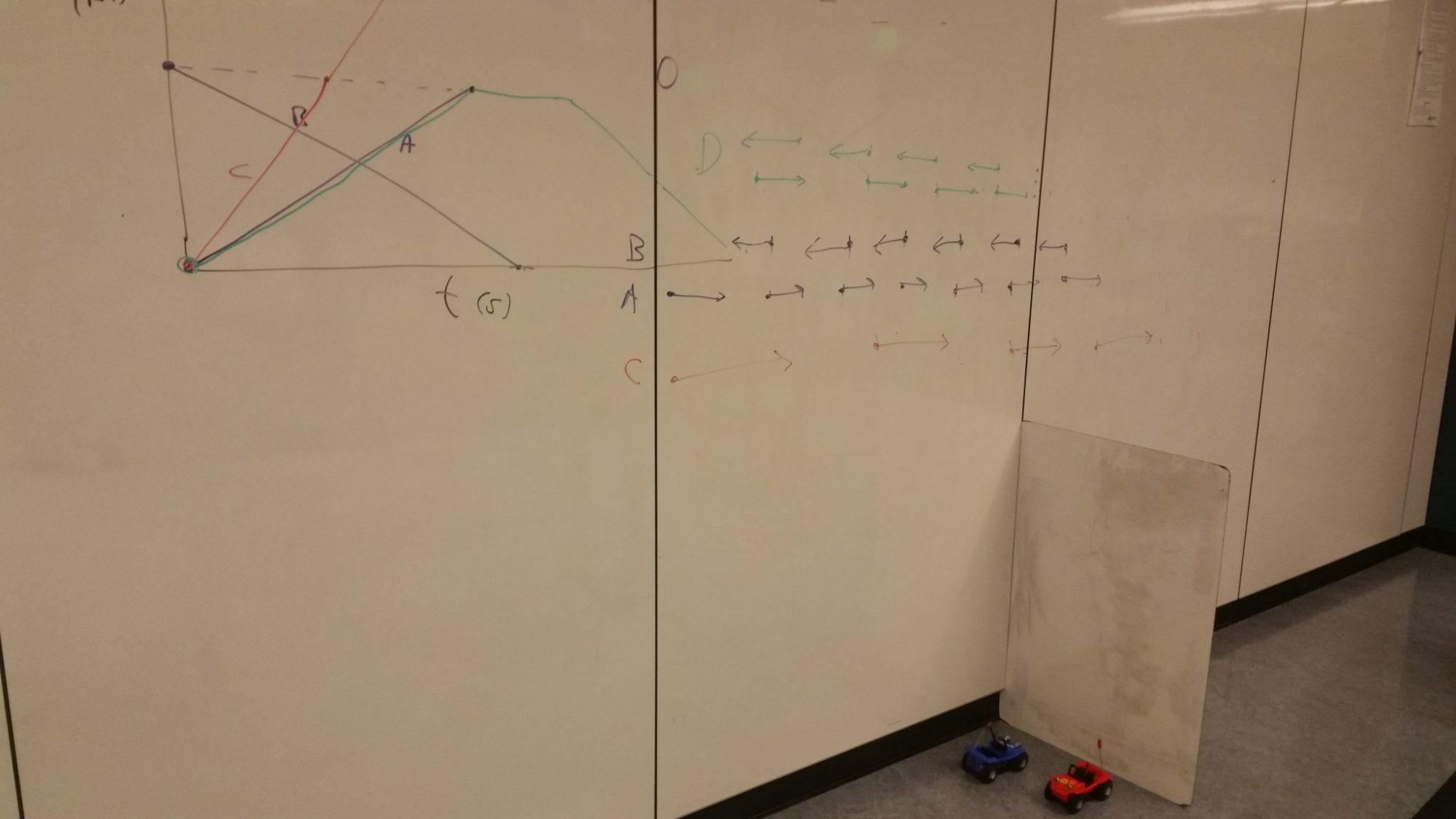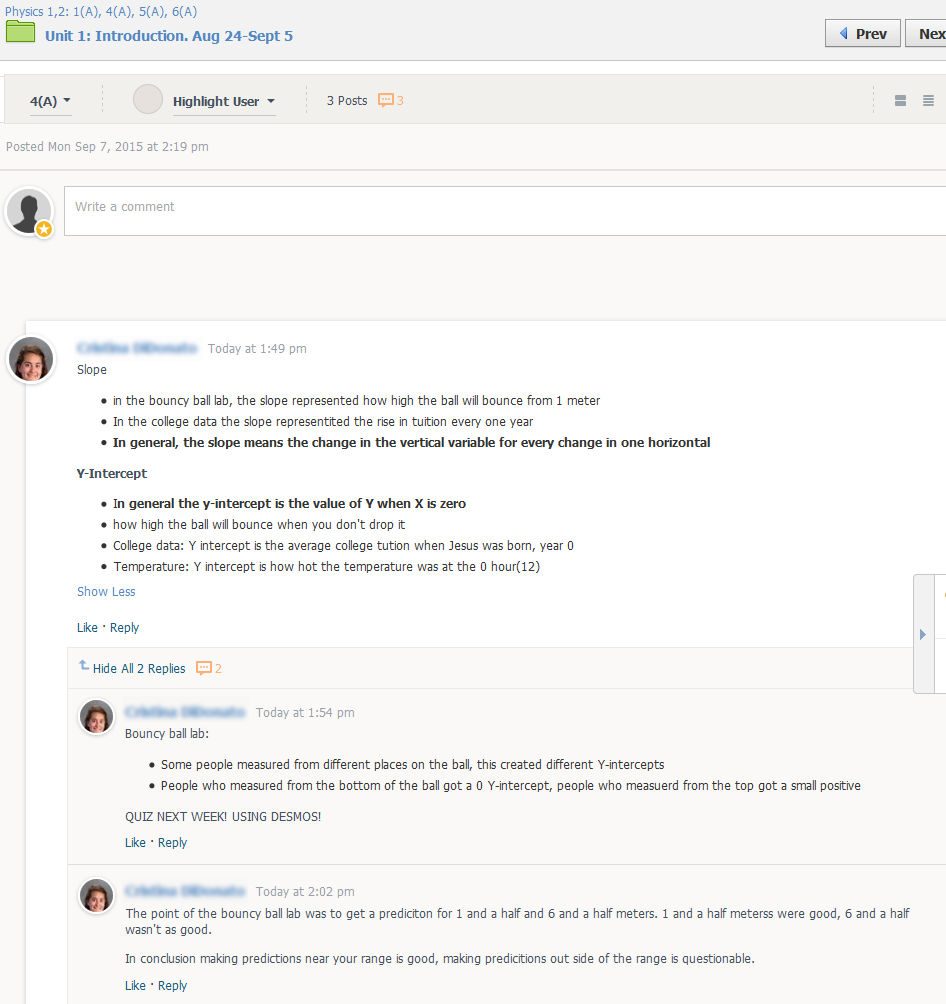180: Day 6: Successful ball bounce, and follow up worksheet
Today my regular physics students conducted their ball drop test. Students mark where they predict the ball will bounce to. After my first day with this lab, I realized I needed a better sheet for them to mark on (I film each drop to get the ‘exact’ bounce height), so here’s a copy of the new prediction half-sheet I developed: Line up arrow with your prediction
Here’s a video showing how successful they can be (the arrow on the yellow post-it marks their prediction):
Outside the classroom: The 6.5 m challenge
After the successful 1.5 m challenge, we move to the 6.5 m challenge. Here’s a slow-motion shot of one of our drops. Notice the tape measure is marked with blue/purple tape at the one-meter and half-meter positions.
In the 6.5 m challenge, most of the groups find their predictions are not nearly as close as in the 1.5 m challenge, which leads to a discussion of “Why not?” Most of the answers are left for the future, when we get to those topics.
Practice with predictions from linear relationships.
This year I developed a worksheet to give students practice with linear relationships. Rather than using physics concepts they don’t know, I used some that they might find interesting: The average cost of tuition and fees at private colleges in the last 44 years, and temperatures in the morning. Each set of data includes some questions with predictions that make sense, and some that don’t seem quite correct. Students are asked to determine which predictions seem realistic, and which are not.
Here is the worksheet, in both PDF and Word format. Note: I teach at a Catholic school, so I threw in a question about how much Jesus would have been paid to go to college. Those of you who work in public schools can feel free to use the Word document and remove this religious reference 🙂





